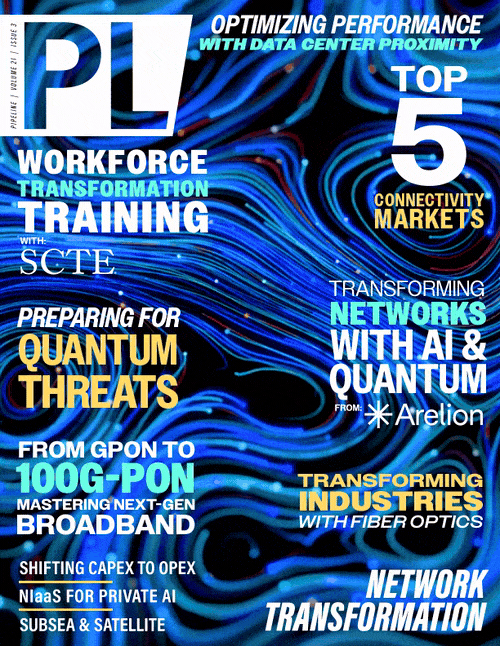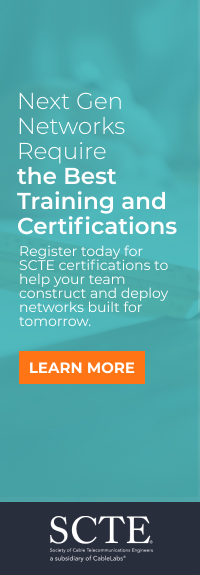Evolving Workforce Training for
Network Transformation
By: Maria Popo

Network transformation is the process of thoroughly changing network infrastructure to improve its efficiency, performance, and scalability. Today, many customers want gig speeds, which are a thousand times faster than the 1Mbps speeds offered when high-speed Internet services first launched twenty-five years ago. Networks have been thrust into transformation with a dizzying trajectory.
There are several key trends already simmering and shaping how today’s networks support rapidly evolving technology. From autonomous enterprises to ubiquitous connectivity, networks of connected devices are communicating and must work together at ever-increasing speeds. Achieving the full potential of the ongoing network transformation depends on elevating workforce training to align with the evolving demands of the broadband industry.
This evolution in training goes beyond closing immediate skills gaps, focusing instead on empowering the workforce to anticipate and adapt to tomorrow’s challenges and opportunities. For example, the hybrid fiber-coaxial (HFC) networks already incorporate fiber, and as fiber extends deeper into the networks, the need for advanced technical skills and specialized training for technicians increases.
Collaboration with content providers and educators is key to expanding and enhancing technical training for the workforce, as well as advancing certifications to reflect the industry’s evolving needs. Developing new standards, such as those for fiber deployment in construction, will ensure training aligns with the latest technologies and practices. As skillsets continue to transform, training programs rooted in industry standards can help establish a universal benchmark for excellence.
 Evaluating the GRID
Evaluating the GRID
How can we evolve training quickly and everywhere it’s needed? Much like a power grid distributes electricity and ensures it reaches the right places at the right time, SCTE is evolving to strategically deploy workforce development resources exactly where and when they are most needed. Every new standard and project launched will be evaluated through our “GRID” framework, assessing its fit and value to operators, vendors, and strategic learning partners. The GRID framework incorporates the following:
- Global and geographical alignment to ensure our broadband learning ecosystem, standards, and content for TechExpo support for both global trends and local needs, prioritizing the needs of operators.
- Responsive talent system to adapt training and talent strategies to respond to industry demands, leveraging chapters and strategic learning partners to stay current.
- Innovative educational content to equip our workforce with cutting-edge knowledge and skills through advanced technologies like AI, developing innovative content based on relevant workforce research.
- Distributed chapter network to leverage SCTE chapters as key nodes to deliver localized initiatives and foster strong networks, enhancing workforce development and employee satisfaction.
Evaluating new training through a GRID lens will ensure immediate relevancy. Today’s training serves as a strategic driver of workforce readiness, requiring continuous adaptation to integrate technologies like AI, harness the strength of our communities, and modernize certifications.
Transform Training with Technology
One of the biggest challenges today is keeping pace with the expedited evolution of technology. We have entered a new era of learning, and today’s L&D leaders are innovating and embracing new methodologies. Technologies like AI and virtual reality (VR) offer new ways to empower employees with the skills they need to succeed in a rapidly changing work environment.
AI is already included in a lot of tools and software, but it can also be a tool for empowering the workforce with its potential for improving troubleshooting and testing. Some operators suggest AI can improve a technician’s ability to troubleshoot to nearly 90% accuracy. SCTE, in collaboration with CableLabs, is developing initiatives to certify and operationalize data for operators’ GenAI troubleshooting agents. By providing accurate, standards-based information, this effort enhances troubleshooting



















